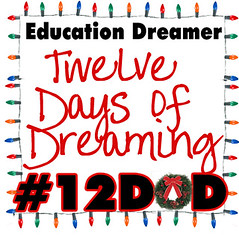If you are so inclined: adventures in humbleness
I am honored and humbled to have been nominated for a Bammy award for Education Commentator/Blogger. This blog started out as a way for me to keep track of the incredible education tools and resources that I came across. Since 2007, it has become SO much more. It has become a source of inspiration (because I met all of YOU incredible people!), it has become a timeline of my own educational journey, it was the match that started a school, it has become a place where I reflect.
I attended the Bammy Awards last year as a blogger. I’m excited that there is a movement in education to honor the incredible things that happen in education every day. I’m excited for the public voice and recognition this award ceremony provides for educators everywhere. I’m thrilled that there is a way for us to tell each other that what we do every day matters.
If you are so inclined, I would love your votes. The votes aren’t really what matters though, what matters is that we support each other every day. Thank you for the ways you have, and continue to support me! I couldn’t do what I do without you. Truly, you have NO idea how you all keep me going some days! I am forever indebted to you!
If you are new to the Bammy Awards, you can read more about them below:
Silence is no longer an option.
The relentless national criticism of America’s public schools that is driving the negative public perception of education is leading to a decrease in public confidence and support. This is seen in demands to reduce funding, drives for privatization, highstakes standardized testing and decreasing influence of frontline educators in the policies that impact you every day. This is true despite the great work and best efforts of the millions who actually work inside education.
Dilligently working with kids in isolation, while quietly believing that humility is the best posture for educators just assures that the negative public perception will continue. To change public perception the voices of educators must be amplified. The stories of what’s right in American education must be told and you can start right now by acknowledging your nomination for a Bammy Award.
Be part of the solution.
“The depth of discouragement among educators in the trenches is at an all-time high and cannot be overstated,” said former Assistant Secretary of Education Diane Ravitch in a recent BAM Radio interview.
This was backed up by Gail Connelly, executive director at the National Association of Elementary School Principals, who said, “I have never seen anything like it in 30 years.”
Educators are being intensely scrutinized, but not as intensely recognized for the great work being done. Together we can change this.
A Bammy Award nomination is meaningful recognition that matters.
Bammy nominations are made by the Academy of Education Arts and Sciences International, comprised of very accomplished, respected and recognized education leaders. The aggregate achievements and contributions of the Academy’s members makes recognition by this group a substantive and unparalleled honor to be highly valued, coveted and respected across the education community and beyond.
Your nomination means that you have made enough of a difference in education that you have caught the attention of a member of the Academy and are a leader in the field yourself. You help bring positive recognition to the education field, yourself and your organization by spreading the word.
You can Vote Here
Nominations for the amazing educators you know can be Made Here








